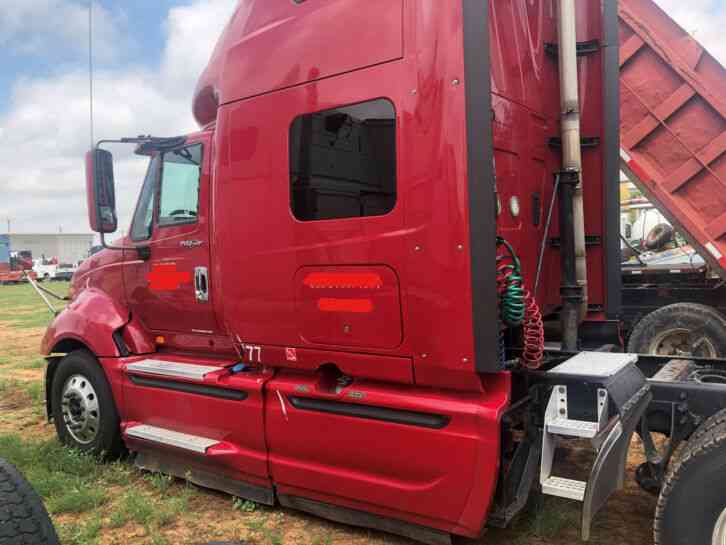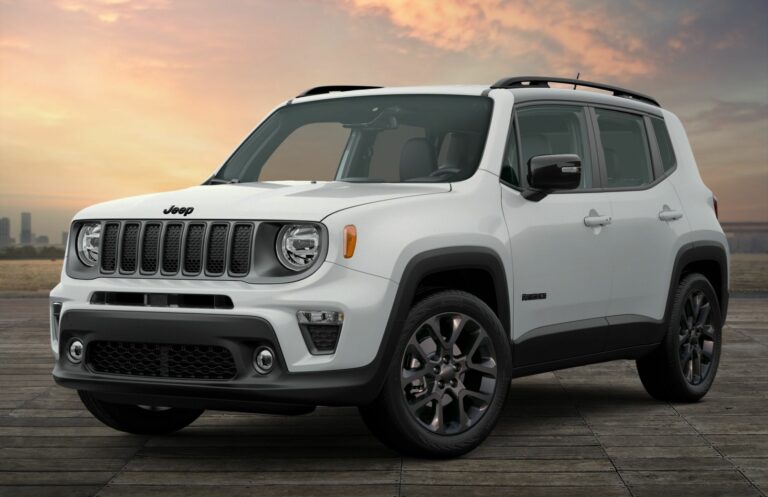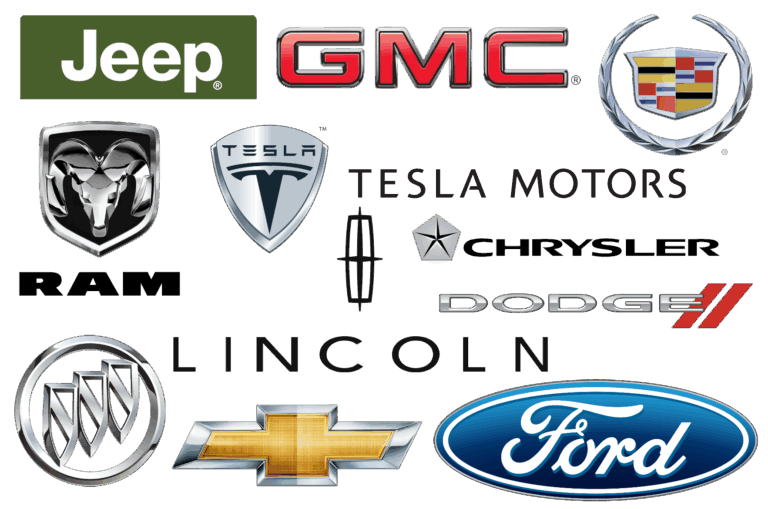Truck Cap Size Chart: Your Ultimate Guide to a Perfect Fit
Truck Cap Size Chart: Your Ultimate Guide to a Perfect Fit cars.truckstrend.com
Choosing the right truck cap, also known as a truck topper or camper shell, is about more than just aesthetics; it’s about functionality, protection, and ensuring your investment truly serves its purpose. A properly fitted truck cap provides secure storage, weather protection, and can even enhance your truck’s aerodynamics. Conversely, an ill-fitting cap can lead to leaks, damage to your truck bed, compromised security, and a generally unappealing look. This is where the Truck Cap Size Chart becomes an indispensable tool. Far from being a simple list of dimensions, a truck cap size chart is a detailed guide that correlates specific truck models, years, and bed dimensions with compatible cap models. Understanding and utilizing this chart correctly is the cornerstone of a successful truck cap purchase, transforming what could be a frustrating endeavor into a straightforward process of finding the ideal match for your vehicle.
This comprehensive guide will demystify the truck cap sizing process, breaking down the essential measurements, explaining how to interpret manufacturer charts, and providing actionable advice to ensure you select a cap that fits like a glove, offering optimal performance and peace of mind.
Truck Cap Size Chart: Your Ultimate Guide to a Perfect Fit
Understanding the Basics: Why Size Matters
The "one size fits all" approach simply doesn’t apply to truck caps. Every truck model, and often different configurations within the same model, features unique bed dimensions, rail designs, and cab heights. A truck cap is designed to sit precisely on the bed rails, seal effectively against the elements, and often align aesthetically with the truck’s cab.
The consequences of an incorrect cap size are significant:
- Poor Seal and Leaks: If the cap is too short, too narrow, or the wrong shape, it won’t seal properly, allowing water, dust, and debris to enter your truck bed, damaging cargo.
- Damage to Truck or Cap: A cap that’s too wide or too long can exert undue pressure on the bed rails, leading to scratches, dents, or even structural damage over time. Conversely, a cap that’s too small might not seat securely, leading to rattling or shifting.
- Compromised Security: An ill-fitting cap is easier to pry open, defeating its primary security purpose.
- Aesthetics: A cap that doesn’t align with the truck’s lines, especially its cab height, looks out of place and detracts from the vehicle’s appearance.
- Installation Challenges: Incorrect sizing can make installation difficult, if not impossible, and may require costly modifications.

Therefore, meticulous measurement and careful consultation of a truck cap size chart are not merely recommendations but absolute necessities.
The Anatomy of a Truck Bed Measurement
Before you even look at a size chart, you need to accurately measure your truck bed. There are three primary dimensions to consider:

1. Measuring Bed Length
This is the most critical measurement. Truck bed lengths are typically standardized, but small variations exist, and it’s crucial to measure correctly.
- How to Measure: Use a steel tape measure. Measure from the inside of the bulkhead (the wall closest to the cab) to the inside of the tailgate, with the tailgate closed. Ensure you measure along the top edge of the bed rails, as this is where the cap will rest. Do not measure the floor of the truck bed, as it might be shorter due to angles or liners.
- Common Lengths: You’ll typically find bed lengths categorized as:

- Short Bed: Often around 5.5 to 5.8 feet (e.g., 66-70 inches).
- Standard/Mid-Size Bed: Around 6.5 to 6.8 feet (e.g., 78-82 inches).
- Long Bed: Typically 8 feet (e.g., 96 inches).
- Note: These are approximate, and exact measurements are vital. For instance, a "6.5-foot bed" might actually measure 78.7 inches.
2. Measuring Bed Width
While bed length is primary, width is equally important for a proper seal and secure fit.
- How to Measure: Measure the width of the truck bed rails from outside edge to outside edge, at the widest point. This is usually near the tailgate or over the wheel wells. Again, measure along the top surface where the cap will sit.
- Consistency: Take measurements at several points along the bed to ensure consistency, especially if your truck has a tapered bed design.
3. Considering Cab Height
This measurement primarily influences the aesthetic appeal and internal cargo volume of your truck cap.
- How to Measure: While not directly used for the cap’s base dimensions, you’ll need to know your truck’s cab height to choose a "cab-high," "mid-rise," or "high-rise" cap. Measure from the top of your truck bed rail straight up to the highest point of your truck’s cab roof. This helps you visualize how the cap will align.
- Cap Types Based on Height:
- Cab-High: Designed to match the height of your truck’s cab for a seamless, factory-installed look.
- Mid-Rise: Slightly taller than the cab, offering a bit more internal cargo volume while maintaining a relatively sleek profile.
- High-Rise (Commercial): Significantly taller than the cab, maximizing internal cargo space for commercial use or larger items, often sacrificing some aesthetic appeal for pure utility.
Navigating the Truck Cap Size Chart: A Step-by-Step Guide
Once you have your precise measurements, you’re ready to consult a truck cap size chart. Most reputable truck cap manufacturers (like ARE, Leer, Snugtop, etc.) provide detailed size charts, usually organized by truck make, model, and year.
Step 1: Identify Your Truck’s Make, Model, and Year
This is the starting point for any size chart. Be precise, as even a mid-year production change can affect dimensions. For example, a 2014 Ford F-150 might have different bed dimensions than a 2015 F-150 due to a redesign.
Step 2: Determine Your Truck Bed Length
Refer to the measurement you took. The size chart will often list specific bed lengths (e.g., 5’5", 6’6", 8’0") corresponding to different truck configurations.
Step 3: Consult Manufacturer-Specific Charts
Generic charts can offer a general idea, but the most accurate information will come directly from the truck cap manufacturer’s website or their authorized dealer. These charts often list specific cap models designed for particular truck year/make/model/bed length combinations.
Step 4: Verify Bed Width and Cab Height Compatibility
While the chart primarily matches by make, model, and length, mentally (or physically if you have the cap in front of you) confirm the width and consider the cab height. The chart will implicitly account for width, but your choice between cab-high, mid-rise, or high-rise will depend on your preference and the available options for your truck.
Step 5: Double-Check and Confirm
Before making a purchase, always double-check all information. If possible, provide your truck’s VIN to a dealer, as they can often use it to pull up exact specifications and ensure a perfect match.
Types of Truck Caps and Sizing Implications
While the base dimensions (length and width) are universal for fitting the bed, the type of truck cap you choose will affect its overall appearance and utility, all within the framework of the size chart.
- Cab-High Caps: These are designed to align seamlessly with your truck’s cab roofline. The size chart will confirm which cap model is built to this specification for your truck.
- Mid-Rise Caps: Offering a slight elevation over the cab, these provide more cubic feet of storage without being overly bulky. The size chart will still guide you to the correct base dimensions for your truck’s bed, then offer mid-rise options.
- High-Rise (Commercial) Caps: These are the tallest options, maximizing cargo volume. While the base still fits your truck’s bed dimensions as per the chart, their significant height means they prioritize utility over matching the cab’s aesthetics.
- Specialty Caps: This category includes contractor caps with side access doors, wedge-shaped caps, or custom builds. Regardless of their unique features, they still rely on the fundamental bed length and width measurements provided by the size chart.
Important Considerations Beyond Just Dimensions
- Truck Model Variations: Be aware that even within the same model year, different trim levels or special editions (e.g., Ford F-150 vs. F-150 Raptor) can have slightly different bed dimensions or rail designs. Always specify your exact truck configuration.
- Bed Liners and Rail Caps: Drop-in bed liners or aftermarket rail caps can sometimes slightly alter the internal dimensions or the seating surface for the truck cap. Most quality caps are designed to accommodate factory liners, but it’s worth mentioning if you have a thick aftermarket liner or rail caps.
- Tailgate Design: Some truck caps are designed with specific tailgate angles or features in mind. While typically accounted for in the size chart, it’s a subtle detail to note.
- Mounting Systems: Understand how the cap will mount to your bed rails (e.g., clamps). Ensure there’s sufficient clearance and surface area.
- Aftermarket Modifications: Lift kits or oversized tires don’t directly affect cap fit on the bed, but they might influence the overall look or your preference for a specific cap height.
Tips for Accurate Measurement and Selection
- Use a Steel Tape Measure: Cloth tapes can stretch and lead to inaccurate readings.
- Measure Multiple Times: Measure the length and width at least twice, perhaps even three times, to ensure consistency.
- Enlist Help: Having a second person can make measuring easier and more accurate.
- Consult the Manufacturer’s Website: Always prioritize the truck cap manufacturer’s official size chart over third-party information.
- Don’t Guess: Never assume your truck has a "standard" bed without measuring.
- Consider Future Needs: If you plan to add a bed liner or rail caps, factor that into your considerations.
- Visit a Local Dealer: An authorized dealer for truck caps has extensive knowledge and can often take precise measurements, confirm compatibility, and even assist with installation. They are an invaluable resource.
Challenges and Solutions
- Discontinued Truck Models: Finding a new cap for an older, discontinued truck model can be challenging.
- Solution: Explore the used market (e.g., online marketplaces). Measure carefully and be prepared for minor fit adjustments. Custom cap manufacturers might also be an option, though more expensive.
- Conflicting Information: If you find different measurements or cap recommendations online.
- Solution: Always cross-reference with the truck cap manufacturer’s official website or contact their customer service directly. A local dealer is also a great resource for verification.
- Non-Standard Beds: Some unique truck models or custom builds might have non-standard bed dimensions.
- Solution: Precise, custom measurements are critical. You might need to look into custom-built caps or be prepared for modifications if adapting an off-the-shelf unit.
Truck Cap Size Chart (Conceptual Example)
Please note: This table is a conceptual example to illustrate how a truck cap size chart is structured. Actual cap models, features, and prices vary significantly by manufacturer, materials, and specific truck configurations. Prices are hypothetical ranges for illustrative purposes only and do not reflect current market values.
| Truck Make/Model/Year | Bed Length (Approx.) | Actual Bed Length (Inches) | Bed Width (Outside Rail-to-Rail, Inches) | Recommended Cap Series (Example) | Key Features (Example) | Typical Price Range (USD – Illustrative) |
|---|---|---|---|---|---|---|
| Ford F-150 (2015-2023) | 5.5 ft | 66.0 | 67.5 | ARE CX Revo / Leer 100XR | Cab-high, frameless glass, interior light | $2,000 – $3,500 |
| Ford F-150 (2015-2023) | 6.5 ft | 78.7 | 67.5 | ARE MX Series / Leer 180 | Mid-rise, more cargo space, side windows | $2,200 – $3,800 |
| Ram 1500 (2019-2023) | 5.7 ft | 67.4 | 66.8 | Snugtop Rebel / ARE Z Series | Cab-high, sleek design, carpeted interior | $2,300 – $4,000 |
| Ram 1500 (2019-2023) | 6.4 ft | 76.3 | 66.8 | Snugtop XV / Leer 100XQ | Cab-high, premium finish, powered lock | $2,500 – $4,500 |
| Chevy Silverado 1500 (2019-2023) | 5.8 ft | 69.9 | 66.0 | ARE V Series / Leer 100R | Entry-level, strong, aluminum frame | $1,500 – $2,800 |
| Chevy Silverado 1500 (2019-2023) | 6.6 ft | 79.4 | 66.0 | ARE MX Series / Leer 180 | Mid-rise, extra head room, vent windows | $2,200 – $3,800 |
| Toyota Tacoma (2005-2023) | 5.0 ft | 60.5 | 58.5 | ARE CX Series / Leer 100R | Cab-high, strong fiberglass, T-handle lock | $1,800 – $3,000 |
| Toyota Tacoma (2005-2023) | 6.0 ft | 73.5 | 58.5 | ARE V Series / Leer 100XR | Cab-high, excellent value, side sliding windows | $1,900 – $3,200 |
| Nissan Titan (2016-2023) | 5.5 ft | 67.2 | 65.5 | ARE CX Revo / Leer 100XQ | Premium, keyless entry, LED lighting | $2,500 – $4,200 |
Frequently Asked Questions (FAQ)
Q1: Can I use a truck cap from a different make/model of truck on my vehicle?
A1: Generally, no. Truck beds vary significantly in length, width, rail design, and cab contour. While some older caps might be close in length, the precise width and rail fit will likely be off, leading to poor sealing, security issues, and an unsightly appearance. It’s highly recommended to get a cap specifically designed for your truck.
Q2: How do I know my truck bed length if I don’t have a tape measure handy?
A2: While measuring is best, you can often find your truck’s specifications in your owner’s manual, on the manufacturer’s website by entering your VIN, or by contacting a dealership. However, always verify with a physical measurement if possible before purchasing a cap.
Q3: What if my specific truck year/model isn’t listed on a manufacturer’s size chart?
A3: This can happen with very old or very new models. First, ensure you’re looking at the most up-to-date chart. If still not listed, contact the truck cap manufacturer directly or an authorized dealer. They may have information not publicly listed, or be able to guide you to a compatible alternative. For very rare or custom trucks, a custom-built cap might be the only option.
Q4: Do bed liners or rail caps affect the truck cap fit?
A4: Most factory drop-in bed liners are accounted for in cap designs. However, very thick aftermarket bed liners or aftermarket rail caps (especially those that significantly change the rail’s width or height) could potentially interfere with the cap’s fit or sealing. It’s best to mention these to your cap dealer or manufacturer when inquiring.
Q5: What’s the main difference between a cab-high and a mid-rise truck cap besides height?
A5: Beyond the obvious height difference, a cab-high cap offers a sleeker, more integrated look, maintaining the truck’s original lines. A mid-rise cap, while slightly taller, provides more internal cubic footage, which is beneficial for hauling taller items or for those who use their truck for camping and desire more headroom inside the cap.
Q6: Is it okay to buy a used truck cap? What should I look out for?
A6: Yes, buying used can save money. However, be extremely meticulous. You must confirm the cap was designed for your exact truck make, model, and bed length. Inspect it thoroughly for cracks, warping, damaged seals, broken glass, or non-functional locks/latches. A used cap from the wrong truck will still be the wrong cap, regardless of the price.
Conclusion
The truck cap size chart is more than just a table of numbers; it’s your definitive guide to a successful truck cap purchase. By understanding how to accurately measure your truck bed’s length and width, considering your cab height, and meticulously consulting manufacturer-specific charts, you can confidently select a cap that not only looks great but also performs flawlessly. Remember, patience in measuring and diligence in cross-referencing will save you from potential headaches and ensure your truck cap provides the protection, security, and utility you expect. A well-fitted cap is a valuable addition, enhancing your truck’s capabilities and protecting your cargo for years to come.




